5 archaeological discoveries that stood out in Türkiye in August 2024
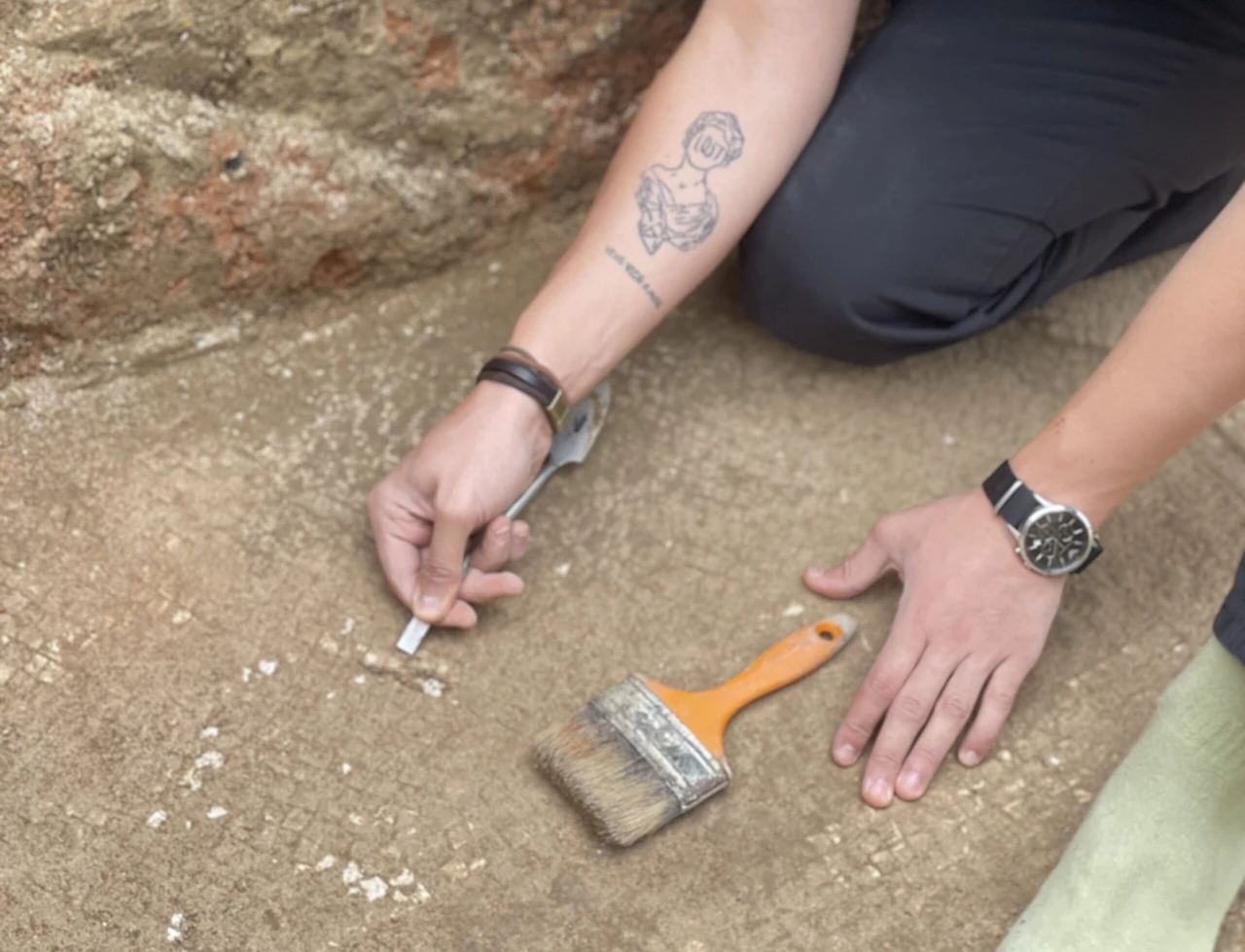 Archaeologist Koray Erdogan uncovers mosaic during excavations at the ancient city of Prusias ad Hypium, Duzce, Türkiye (Photo via Dogus Caliskan)
Archaeologist Koray Erdogan uncovers mosaic during excavations at the ancient city of Prusias ad Hypium, Duzce, Türkiye (Photo via Dogus Caliskan)
Anatolia, a historic region bridging East and West, is renowned for its rich tapestry of civilizations, from the Hittites and Phrygians to the Greeks and Romans.
Its storied past is mirrored in its extensive archaeological treasures, which continue to fascinate historians and archaeologists.
As we delve into 2024, Türkiye’s archaeological landscape has once again revealed remarkable insights into its ancient heritage.
This summer, August has been particularly significant, with groundbreaking discoveries that illuminate various facets of ancient life across the region.
From elaborate burial sites to intricate mosaics, each find adds a new chapter to our understanding of Anatolia’s profound historical legacy.
Here are the top five archaeological discoveries made in Türkiye this August, showcasing the region’s timeless allure and its pivotal role in the narrative of human civilization:
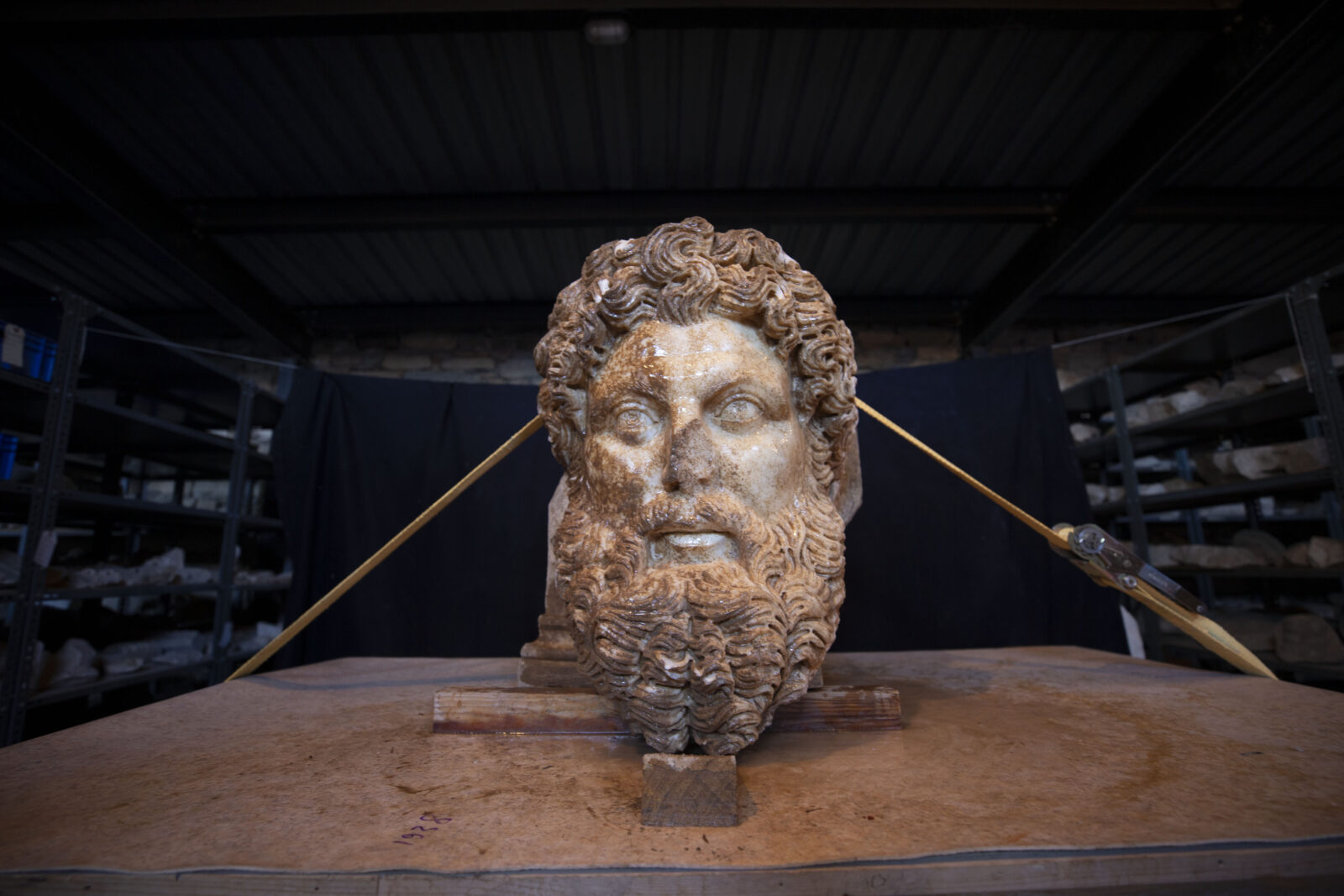
Stunning Zeus head unearthed in ancient Aphrodisias (Geyre, Aydin)
A monumental Zeus head discovered in Aphrodisias is hailed as a prime example of Roman sculpture. Professor Roland R. R. Smith, leading the Aphrodisias Excavation, noted its exceptional historical and artistic value.
Found during vegetation clearing around the Aphrodisias Temple, the sculpture displays intricate details and remnants of original paint, showcasing Roman portrait artistry at its finest. Smith emphasized the Zeus head, featuring detailed hair and beard, may have originated from a sacred site, reflecting the city’s grandeur.
This discovery not only illustrates the high craftsmanship of Roman Imperial art but also underscores Aphrodisias’s rich cultural legacy.

Significant relics uncovered from Battle of Thymbra in ancient Sardis (Salihli, Manisa)
Archaeologists have uncovered remarkable relics from the Battle of Thymbra, a pivotal conflict leading to the Persian occupation of Lydia, in the ancient city of Sardis.
The discoveries include artifacts from around 2,500 years ago and the skeleton of a soldier holding a stone, potentially a slingstone used in battle.
Ongoing excavations, led by professor Nick Cahill of the University of Wisconsin, have revealed weapons such as spears, arrowheads, and swords.
Professor Cahill highlighted that the soldier’s remains, found among the rubble of mudbrick walls, bear sword wounds and suggest a defeat for the Lydia soldiers.
These findings underscore the Persian Empire’s impact and offer new insights into ancient warfare strategies.
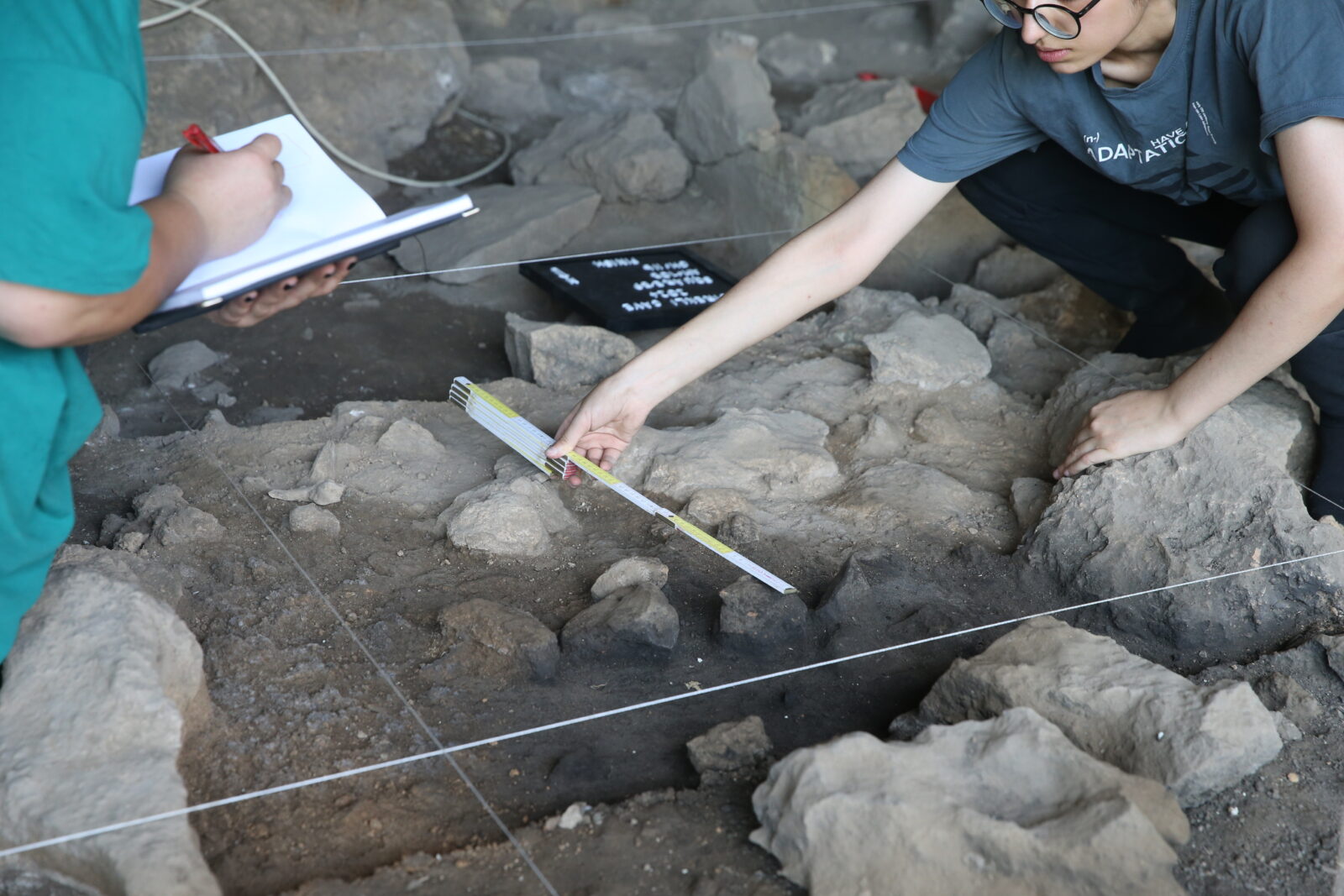
Unique 14,500-year-old burial structure unearthed in Direkli Cave (Onikisubat, Kahramanmaras)
In Direkli Cave, Dongel Village, Kahramanmaras, a remarkable 14,500-year-old rectangular burial structure has been uncovered. This find, the fourth burial site discovered since 2007, offers new insights into the region’s ancient past.
The latest excavation, led by Assoc. professor Merih Cevdet Erek from Ankara Haci Bayram Veli University, revealed a unique rectangular grave surrounded by stone blocks. Unlike the typically round or oval graves of the period, this structure is notable for its rectangular shape and the body laid in a linear orientation.
Erek praised the meticulous excavation work, which involves precise documentation of every find.
This discovery highlights the historical depth and cultural heritage of the Direkli Cave site.
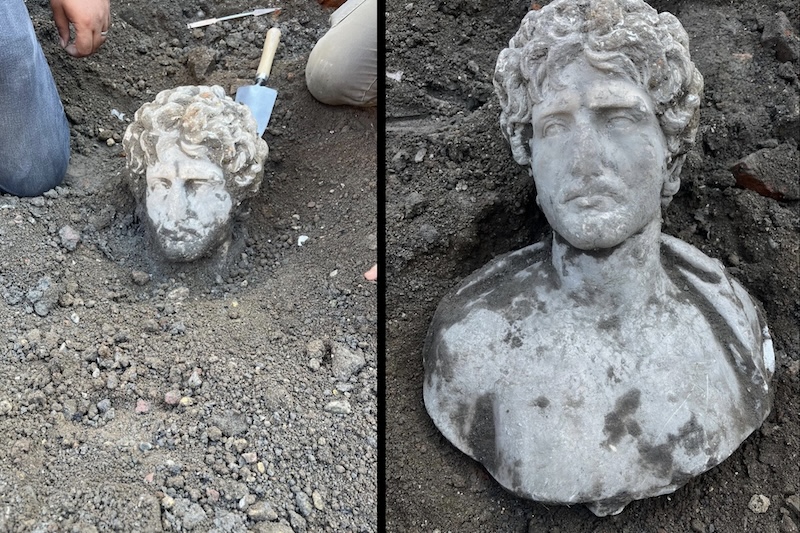
Bust of theater builder found in Prusias ad Hypium (Duzce)
In recent excavations at the ancient city of Prusias ad Hypium in Duzce, a bust of the person who commissioned the construction of the theater’s stage building has been discovered.
The bust believed to represent the imperial priest M. Iulius Proklos from around 1,800 years ago, was found near the western entrance of the theater.
The 56 centimeters high and 50 centimeters wide bust features curly hair and a detailed beard, reflecting the style of the Antonine period. Researchers suggest this bust was created during the reign of Emperor Hadrianus.
Prusias ad Hypium, located in Konuralp, Duzce, was founded in the third century B.C. Initially known as Kieros, it was renamed and flourished under Roman rule, becoming a prominent site with grand structures.
Today, it lies beneath the modern settlement of Konuralp.
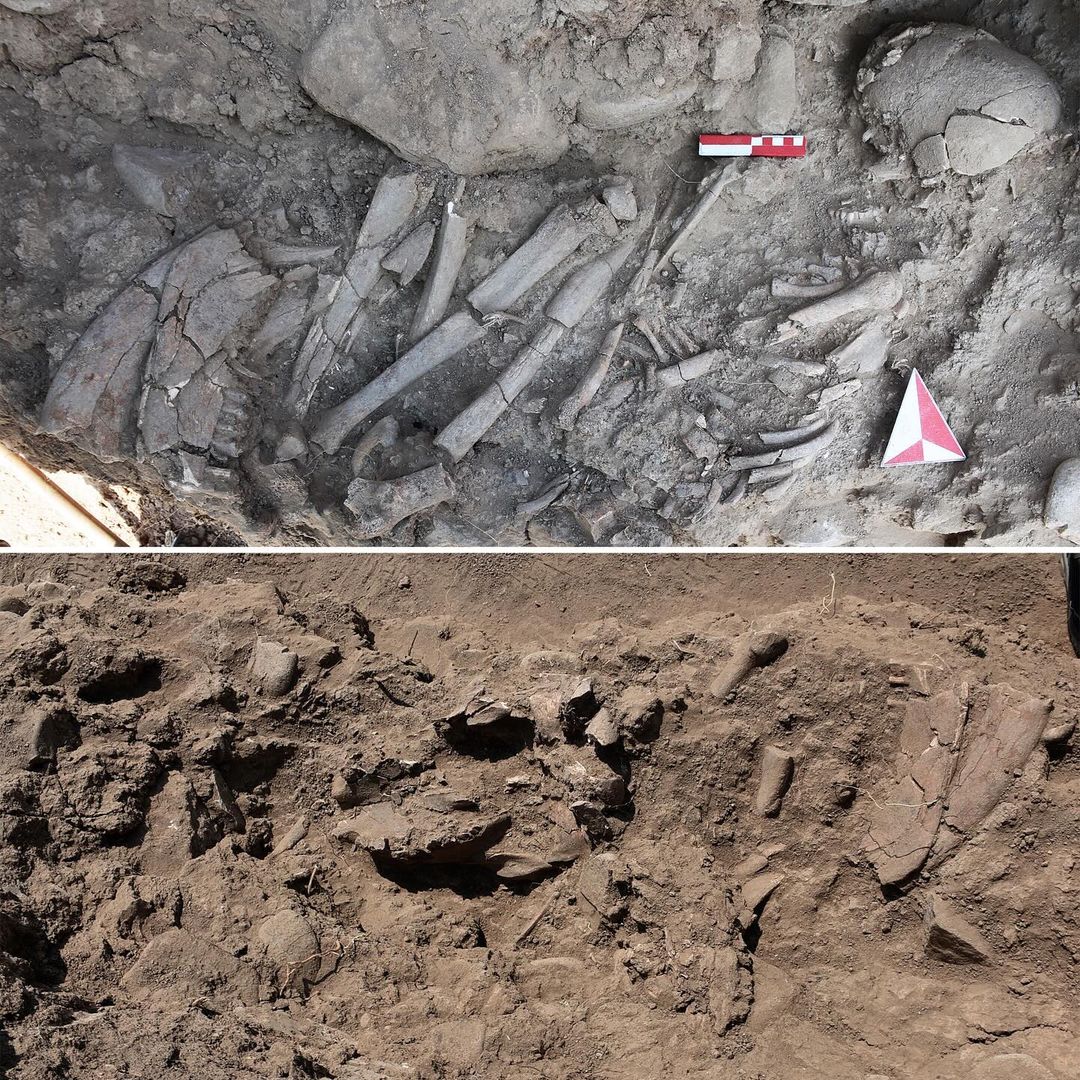
Ancient shaman’s 12,000-year-old burial unearthed in Cemka Hoyuk (Mardin)
A groundbreaking discovery at Cemka Hoyuk, a site in southwestern Türkiye near the Tigris River, has unveiled a 12,000-year-old burial that may belong to a female shaman. The excavation, led by Associate professor Ergul Kodas and his team, reveals significant insights into early hunter-gatherer spirituality during the Pre-Pottery Neolithic A (PPNA) period.
The burial, found beneath the floor of a mud-brick building, contained the remains of a woman aged 25-30, accompanied by various animal bones including an aurochs skull, a partridge wing, and a marten leg. The presence of a large limestone block over the grave and the diverse animal remains suggest a potential ceremonial role for the deceased.
This finding aligns with the transition from nomadic lifestyles to settled communities and reflects broader PPNA ritual practices. It enhances our understanding of ancient spiritual roles and challenges perceptions of early gender roles and ritual significance. The animal remains, comparable to other shamanistic burials, highlight the possible spiritual connections of the time.
The discovery at Cemka Hoyuk offers profound insights into the spiritual and ritual practices of early societies, shedding light on the complex roles of early spiritual leaders.
The month of August 2024 has proven to be a remarkable month for archaeological discoveries in Türkiye, offering fresh perspectives on ancient civilizations.
These finds not only highlight the region’s rich historical tapestry but also provide valuable insights into the artistic, military and spiritual dimensions of past societies.
From the grandeur of Roman sculpture to the enigmatic practices of early hunter-gatherers, each discovery adds a new layer to our understanding of Anatolia’s profound heritage.



